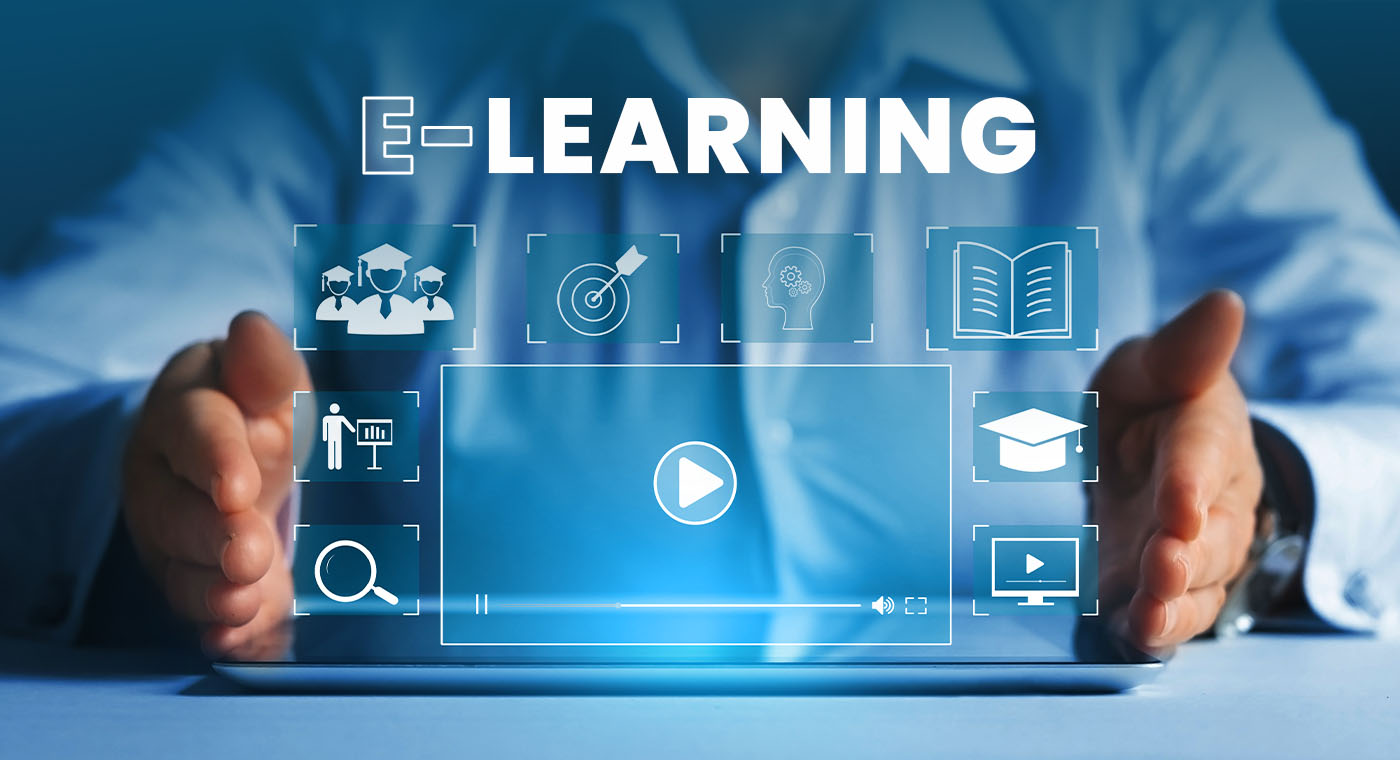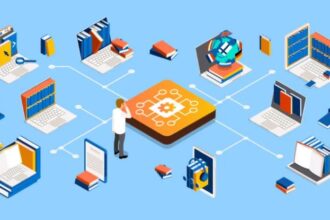The shift toward digital education is no longer a passing trend, it is a global transformation. Once viewed as a supplement to classrooms, online learning has become a primary mode of delivering knowledge across schools, universities, businesses, and governments. What started as a backup plan during times of disruption has now turned into a profitable, scalable, and future-ready industry.
E-learning today means more than just video lectures. It brings together cloud-based platforms, interactive content, AI-powered tools, and mobile-first apps that make knowledge accessible to anyone, anywhere. From personalized skill-building to immersive simulations, digital education is creating opportunities that traditional systems could never scale.
According to Grand View Research, the global e-learning services market is projected to reach USD 842.64 billion by 2030, powered by reskilling demands, corporate training investments, and the rapid adoption of mobile technologies. In simple terms, learning is being reimagined for the digital age.
Knowledge in the Cloud: Redefining How We Learn
Online learning has outgrown its early limitations. Cloud-based platforms now allow students and professionals to access global classrooms, track progress seamlessly, and collaborate in real time.
For educators and institutions, this model offers scalability, delivering the same course to ten learners or ten thousand without additional infrastructure. For learners, it removes barriers of time and geography, enabling a true anytime, anywhere approach.
As artificial intelligence, analytics, and immersive tools become integrated, the cloud is not just a delivery channel, it is becoming the foundation for smarter, more adaptive education.
Breaking the Chalkboard: Why Digital Learning is the New Normal
The rapid rise of online education is not simply a response to necessity, it has become the new standard in how we approach teaching and training. Multiple factors are converging to make digital-first models the default.
- Shift in Education Models: Schools and universities are embedding digital platforms into core teaching strategies.
- Corporate Adoption: Companies are phasing out traditional workshops in favor of scalable online modules.
- Government Push: Digital literacy programs and skill-development schemes are fueling accessibility.
- Cost Benefits: Online training cuts expenses for travel, venues, and printed material.
- Blended Approach: Hybrid learning, mixing online and offline methods, is emerging as the dominant model.
Skills on Demand: Fueling Lifelong Learning
The shelf life of skills is shorter than ever. Technical expertise that was valuable yesterday might not hold the same relevance tomorrow. Here lies the strength of digital education, it enables professionals to reskill and upskill in real time.
For individuals, short certifications, micro-learning modules, and flexible courses provide the agility to stay employable. These programs fit easily alongside full-time jobs, making lifelong learning a practical reality.
For organizations, digital training strengthens competitiveness. It allows companies to continually upgrade their workforce, reduce employee turnover, and maintain alignment with industry shifts. In this sense, learning has moved from a phase of life to a permanent career strategy.
Beyond Borders: Online Education as a Global Equalizer
Digital learning is also breaking down barriers of geography, language, and access. What was once a privilege of a few is now available to many through affordable and scalable platforms.
- Global Access: Remote learners can access the same high-quality content as urban students.
- Multilingual Learning: Regional language courses improve inclusivity and adoption.
- Cross-Cultural Classrooms: Experts from one country can reach learners worldwide.
- Bridging Inequality: NGOs and governments use digital platforms to reach underserved groups.
Learning in Motion: The Mobile-First Era
The rise of smartphones has put education directly in people’s pockets. Mobile-first learning is quickly becoming one of the most powerful trends shaping digital education.
In many emerging economies, the smartphone is often the only digital device people own. This makes mobile learning a critical driver of inclusivity, bringing quality education to populations previously left out.
Future innovations will only strengthen this shift. Offline modes, AR-based modules, and AI-driven notifications will turn learning into a habit seamlessly woven into daily life.
Corporate Classrooms Go Digital: The Future of Workforce Training
Businesses are recognizing that traditional methods of training are too slow, costly, and rigid for today’s fast-moving industries. Digital-first corporate classrooms are stepping in as the solution.
- Instant Rollouts: Global companies can deploy training across geographies within hours.
- Real-Time Monitoring: Managers can track progress and adapt modules quickly.
- Personalized Paths: AI-driven learning journeys adapt to job roles and employee needs.
- Efficiency Gains: Online training significantly reduces costs and time investments.
- Business Agility: Companies can respond faster to technological disruption and industry changes.
Challenges That Teach Us: Barriers to Overcome
The growth of online education comes with hurdles. One of the biggest is digital infrastructure. In many rural areas, connectivity gaps prevent learners from fully participating.
Another barrier is digital literacy. While younger generations adapt quickly, many professionals and educators face a learning curve in using new platforms.
Finally, learner engagement remains an ongoing challenge. Providers are experimenting with gamification, storytelling, and interactive tools to sustain motivation. Each challenge, however, sparks innovation, pushing the industry to evolve stronger solutions.
Tomorrow’s Blackboard: AI, AR, and Gamification
The future of learning is already being shaped by next-generation technologies. These tools are enhancing not only the way content is delivered but also how learners interact with it.
- AI Personalization: Adaptive recommendations keep learners on the right track.
- Virtual & Augmented Reality: Practical simulations for healthcare, engineering, and science training.
- Gamified Content: Rewards, badges, and challenges enhance participation.
- Predictive Analytics: Data-driven insights prevent dropouts and improve retention.
- Blended Future: Combining digital and physical models for maximum effectiveness.
Conclusion: Learning Reimagined for the Digital Age
Digital learning has matured from being a convenience to becoming an essential driver of growth, innovation, and inclusion. It is enabling individuals to stay employable, organizations to stay competitive, and societies to stay progressive.
From reskilling workforces to educating remote populations, e-learning is proving that knowledge is no longer confined to classrooms. The future belongs to platforms that make learning smarter, faster, and more equitable. In essence, the e-learning services market is not just about teaching lessons. It is rewriting the rules of how the world learns.
















